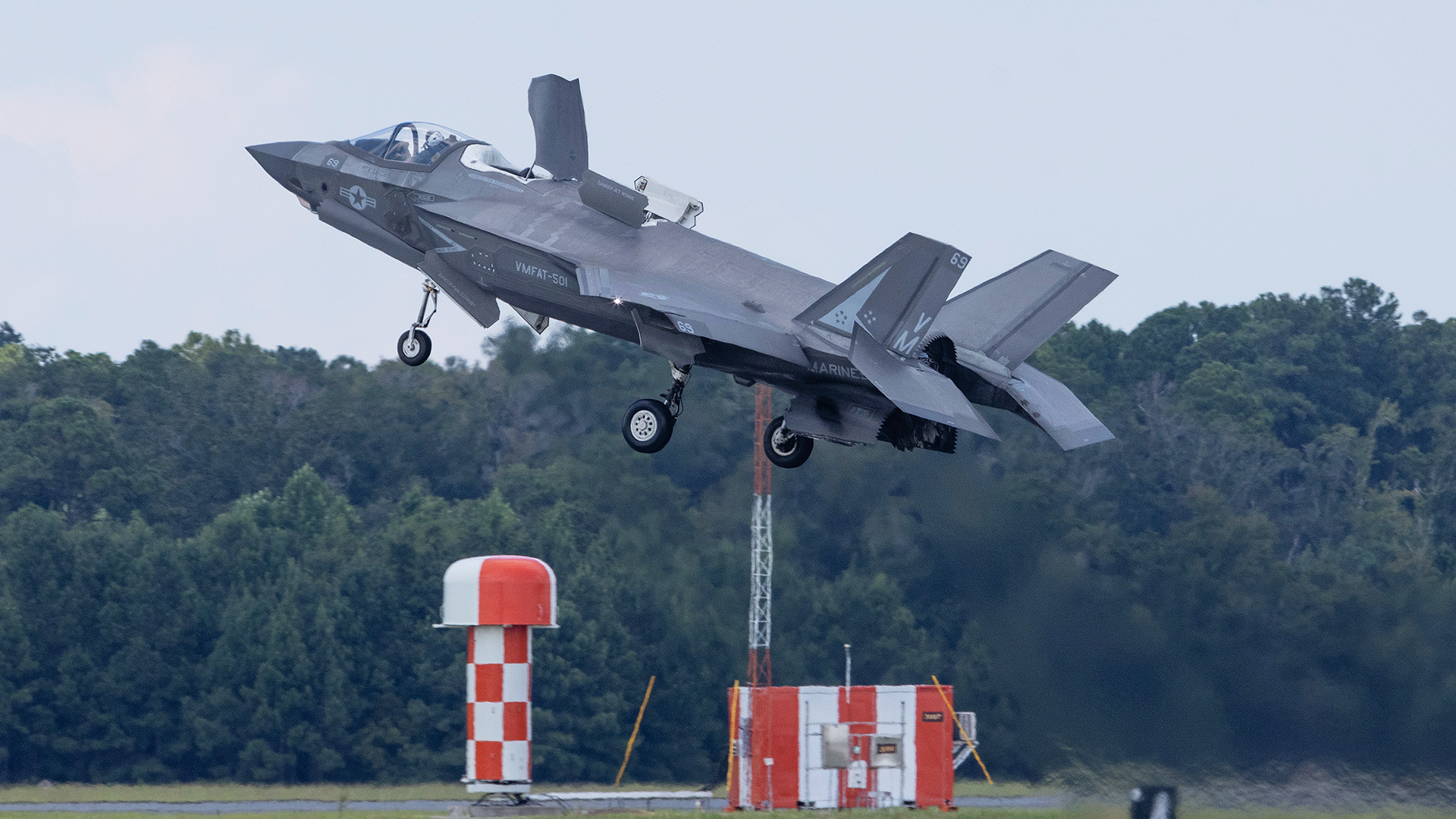The USMC has released its final conclusions regarding its investigation into the bizarre loss of an F-35B that crashed in South Carolina on September 17th of last year. The Marines say that the mishap was caused primarily by pilot error, stating that “the pilot incorrectly diagnosed an out-of-controlled flight emergency and ejected from a flyable aircraft, albeit during a heavy rainstorm compounded with aircraft electrical and display malfunctions.” The jet went on to continue flying without a pilot for over 60 miles before slamming into a field. Thankfully, nobody was injured as a result of the incident. You can read our last in a number of reports on the F-35B’s ‘ghost ship’-like mishap here.
The release from the 2nd Marine Aircraft Wing summarizes the circumstances of the crash as they are now known:
“On the afternoon of Sept. 17, 2023, a U.S. Marine Corps F-35B Lightning II Joint Strike Fighter, assigned to Marine Fighter Attack Training Squadron (VMFAT) 501, 2nd MAW, crashed in South Carolina. The pilot safely ejected from the aircraft while attempting to execute a climbout during a missed approach in instrument meteorological conditions and heavy precipitation near Joint Base Charleston, South Carolina. The aircraft continued to fly unmanned for 11 minutes and 21 seconds before impacting in a rural area approximately 64 nautical miles northeast of the airfield in Williamsburg County, South Carolina.“

The release goes on to describe other issues that contributed to the loss of the F-35B, including a cascade of systems failures throughout the jet:
“Contributing factors to the mishap included an electrical event during flight, which induced failures of both primary radios, the transponder, the tactical air navigation system, and the instrument landing system; and the probability that the helmet-mounted display and panoramic cockpit display were not operational for at least three distinct periods. This caused the pilot to become disoriented in challenging instrument and meteorological conditions. This electrical malfunction was not related to any maintenance activities. All preventative, scheduled, and unscheduled maintenance conducted on the aircraft was correct and in keeping with established standards.
The pilot was qualified and current to conduct the scheduled flight. The flight was scheduled, planned, briefed, and conducted properly, professionally, and in accordance with applicable orders and directives. The forecasted and observed weather at the time of the mishap supported the decision to land back at Joint Base Charleston.
The investigation concludes the mishap aircraft’s extended unmanned flight was due to stability provided by the F-35’s advanced automatic flight-control systems.
The loss of positive radar contact with the mishap aircraft resulted from a failed transponder caused by the electrical malfunction and the aircraft’s eventual descent below the air-traffic control radar horizon. The loss of positive contact could also be partially attributed to the F-35B’s low-observable technology.”
“The investigation concluded that the mishap occurred due to pilot error. The pilot incorrectly diagnosed an out-of-controlled flight emergency and ejected from a flyable aircraft, albeit during a heavy rainstorm compounded with aircraft electrical and display malfunctions.”
The release also discusses the recovery and remediation efforts once the wreck was found on September 18th, noting that “The mishap resulted in no ground-related injuries, but it did result in property damage in the form of lost forested land and crops.”

Finally, it concludes that “there were no punitive actions recommended.”
You can check out the initial detailed report on the crash published earlier this year here.
So there you have it, finally we get the USMC’s conclusions to what was a the time a very strange mishap that thankfully ended up with just the loss of an aircraft, albeit a prized and very expensive one.
Editor’s note: 2nd MAW sent us a request to remove a section of their original release and we obliged, but due to the ambiguity of why this was removed and the complexity of this event and the placement of the blame on the pilot, we need to disclose the nature of the request and its contents here. We hope to do a follow up on this report and the impact it had on the pilot who was in command of the aircraft at the time of the incident:
I’d ask that the following paragraph please be removed from the below linked article to reflect the most recent press release, “The investigation concluded the pilot’s decision to eject was ultimately inappropriate because commanded-flight inputs were in progress at the time of ejection, standby flight instrumentation was providing accurate data, and the aircraft’s backup radio was, at least partially, functional. Furthermore, the aircraft continued to fly for an extended period after ejection.”
Please utilize the following statement, “The investigation concluded that the mishap occurred due to pilot error. The pilot incorrectly diagnosed an out-of-controlled flight emergency and ejected from a flyable aircraft, albeit during a heavy rainstorm compounded with aircraft electrical and display malfunctions.”
The placement of blame on the pilot in the aftermath of this mishap requires further investigation. We will be looking into it further. Stay tuned.
Contact the author: Tyler@twz.com
